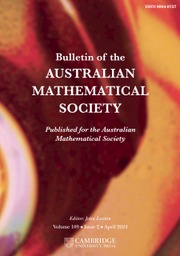The identification of mesoscale structures is essential to understand the organisation of complex networks. Despite the recognition of various structural patterns in many networks, previous works on the detection of groups of users have focused on finding specific types, such as assortative and core–periphery structures, and developing computational methods to find these mesoscale structures within a network. In this thesis, we go beyond the problem of detecting a specific type of mesoscale arrangement and, instead, ask what type of mesoscale structures exist, how typical each is and how we can interpret them. We start by introducing a methodology that is able to identify and systematically classify all possible community structure types in directed multi-graphs, based on the pairwise relationship between groups [Reference Liu, Alexander and Altmann1]. The data survey on 55 empirical networks shows that other structural patterns are typical in networks. A particularly prevalent new type of relationship, which we call a source–basin structure, reveals a new type of information flow from a sparsely connected group of nodes (source) to a densely connected group (basin). To gain a better understanding of the formation of these structures, we introduce and investigate a generative model of network evolution with two communities that reproduces all four pairwise community types that exist in directed networks: assortative, core–periphery, disassortative and the newly introduced source–basin type [Reference Liu, Alexander and Altmann2]. With node connectivity changing during evolution, we find that a difference in assortative preference of the two communities is a necessary condition to obtain a core–periphery relationship and that a difference in the average in-degree of the communities is a necessary condition for a source–basin relationship. We further apply the methods developed to social media data and examine the significant role that community structures play in networks. Notably, core–periphery or source–basin structures are obtained in almost every network, confirming the widespread appearance of nonassortative structures in social networks. A detailed study of source–basin structures reveals a new pattern of information flow, where more central nodes having few interactions with each other influence an actively interacting group. It also shows the potential of hitherto unidentified relationships to explain the organisation of complex networks.
No CrossRef data available.


